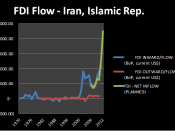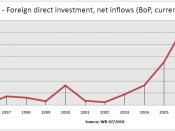The fashion industry has been a strong contributor to the Australian economy, generating almost AUD$3 billion dollars in revenue in 2012, increasing yearly (Nightingale, M., 2013). With its strong demand for fashion, international brands are beginning to take an interest in the Australian market. The Swedish owned H&M (Hennes & Mauritz) - the second largest clothing retailer - is one of those brands (Robin, M., 2013). Along with liberalization of Australia's Foreign Direct Investment (FDI) policies such as a larger-than-anticipated interest rate cut by the Reserve Bank of Australia to 2.25%, H&M's entrance into the Australian market could not have come at a better time (TheAge, 2013). Economic activities such as this are the product of the globalization of trade, where trade and investment is becoming easier across national borders with the advancement of technologies and shrinking perceived distance (Dowling, Liesch, Gray & Hill, 2009; Buckley & Ghauri, 2004; Puljeva & Widen, 2007).
This enables companies to strategically position their production activities in geographically optimal locations. As a result, Multi-National Corporations (MNCs) such as H&M are able produce at large volumes and suppress costs through economies of scale, while also increasing their consumer base through the entrance of new markets, hence gaining competitive advantage (Dowling, et al., 2009)). H&M's choice of entry into the a new market, specifically Australia, as well as their choice of modes of entry can be represented by John Dunning's (1998) eclectic paradigm, which contends that an MNC's success is dependent on a tripod that is "OLI" - Ownership advantages, Location advantages and Internalization advantages.
Hennes & Mauritz originated in Sweden as Hennes in 1947, selling women's clothing. Hennes began operating as H&M after men's and children's clothing were added to the catalogue. Today, it has around 2900 stores in 51 countries, and employs...


